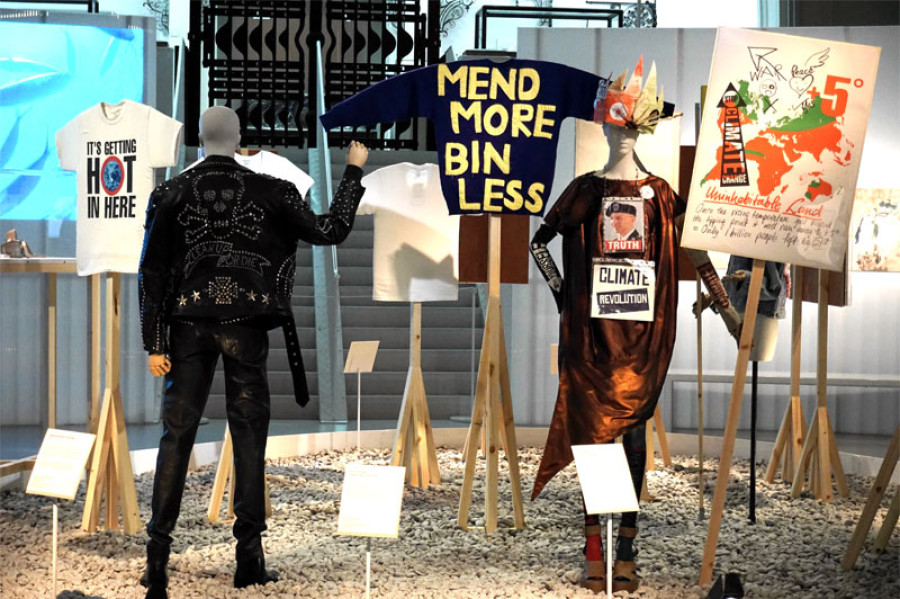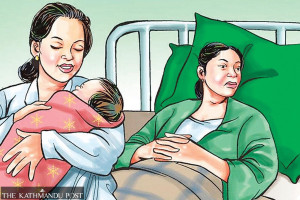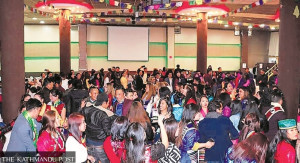Fashion
Will we see a fashion revolution post lockdown?
Industry insiders believe the pandemic could potentially change the fashion industry and influence people to make more sustainable choices.
Ankit Khadgi
Around this time of the year, Khusbu Dangol would have been a busy person. As the owner and designer of Oodni The Boutique, a brand that revolutionised bridal outfits in Nepal, Dangol, with her staff, would have been busy with some of the last weddings of the season, making sure brides looked beautiful in Oodni's exquisite creations.
This year, however, things were quiet. Because of the nationwide lockdown, Oodni has been shuttered for the past two months and business has been at an all-time low. “Our sales this year were less than half of previous year's wedding season,” says Dangol.
The current pandemic has hurt all sectors financially, and the fashion industry is no exception. And although Nepal is not seen as a fashion hub yet, the country's fashion scene has exploded in recent years, with multiple international brands stepping into the market and many local clothing brands emerging to drive a profitable industry. However, according to fashion insiders, things might change because of the pandemic, and the country could witness a shift in the demand, production, and distribution of the fashion industry as well as the clothing choices of the people.
“People will think twice about spending their money buying outfits, as saving money will become a priority,” says Dangol. “It will be only on special occasions like weddings and pasnis that people will think of buying a new outfit. Otherwise, I don’t think people will spurge on outfits—at least until sometime."
With the pandemic quickly unravelling an economic crisis, more and more people are being conscious about their spendings, which means shopping on nonessential items will reduce significantly. Likewise, physical distancing measures will most likely be continued for the foreseeable future and this will shape the clothing choices of people, say industry insiders.
“In this social media generation, repeating an outfit is almost considered a crime, which has made people buy clothes every time they go out. But now with nowhere to go I feel people will be cautious about their spending habits,” says Rhea Pradhan, a fashion stylist and popular blogger.
As demand for clothes declines, more and more people could value and adopt sustainable fashion choices, say proponents of sustainable fashion. “The pandemic has provided valuable time for people to rethink and make conscious positive changes in their lifestyle,” says Hana Rai of Lagom Nepal, a slow clothing fashion store. “I have seen many people who are trying to educate themselves about the negative effects of fast fashion clothes and making small changes in their lifestyle by upcycling the available clothes or by learning the techniques of eco dyeing during this lockdown. We can say that the collective consciousness of people on how their clothes are made is going to increase,” says Rai.
The fashion industry, which often does not come under the radar of people while discussing climate change, alone accounts for more than 10 percent of global carbon emission. While efforts are being made worldwide to make the clothing industry more ethical, sustainable and less damaging to the environment, in Nepal the momentum is very limited.
According to Meena Gurung, the founder of Bora Studio, a sustainable fashion brand based in Kathmandu, the future looks promising, and though things will change, they won’t change dramatically. “We are definitely going to see a fashion revolution in Nepal, as people are being conscious about organic and sustainable lifestyles. This could resort to more and more people buying and using ethically made clothes,” says Gurung.
And to cater these changing demands and the customer behaviour pattern, many local fast fashion brands are also thinking of changing their strategies and adapting with the current crisis. “For the past two years, we have been producing our own line of cotton-based clothes. Even though we are a fast fashion company, we slowly want to transition towards more sustainable practises,” says Tenzin Dawa Shakya, managing director of DS collections, a popular Nepali fashion store.
However Gurung believes that this change can happen also with the aim of promoting local products as for the growth of the economy. “As the focus will be more on the production and also the consumption of locally produced goods within the country, to strengthen the economy, the local brands will get the market to sell the products more than before,” says Gurung.
But the localisation of the fashion industry in Nepal is a herculean task, given the lack of resources as well as lack of versatility when it comes to sustainable clothing. “Even if producing local clothes is our end goal, we have limited resources and because of that we will have to buy raw materials from other countries. So practically speaking we cannot produce everything here,” says Shakya.
Likewise, Gurung also says that pragmatically the shift in sustainable clothing will take time to grow, given the fact that very few people are aware about such brands and its benefits, she says.
However all the fashion experts and insiders who spoke to Post agree that the biggest fashion revolution that will take place post the pandemic is the change in customer’s perception towards clothes and the value they attached to such consumables. “The pandemic has taught us the importance of comfort and essentiality. People are opting for clothes that are comfortable yet presentable enough for their online meetings,” says Pradhan.
Similarly, Rai also says that she has been receiving many bookings and orders from people who are showing interest in buying thrift, vintage as well as organic clothes that to their comfort and makes them look smart and sharp as well.
Additionally, with the growing momentum of the online delivery, the value of physical fashion outlets may slump. And brands are trying to evolve as per changing times. For example, DS collections have also resumed their online services following precautions and are planning to expand the online delivery to more customers as well.
Oodni, though not online, is planning to open it’s studio strictly adhering to physical distancing rules and by taking pre-appointments.
While fashion labels try to adapt to the ‘new normal’ gradually, a change in consumers’ perception towards what we wear and the value we attach towards it is inevitable, say industry insiders. After all, such changes are charged by tumultuous times. The Great Depression led people to use available resources they had in sewing their own clothes or buying clothes from cheap material. Likewise the Great Recession of 2009 influenced minimalism to enter into the realm of fashion and design.
This time too fashion experts believe the pandemic will change the fashion industry, with brands and customers making more sustainable choices, upcycling their old clothes and buying old and second hand clothes more than ever before.
“Fashion changes as the world around changes,” says Rai. “With more people understanding the value of their life and other resources, we are bound to see people thinking of buying clothes that are comfortable and last long,” says Rai.




 9.12°C Kathmandu
9.12°C Kathmandu










